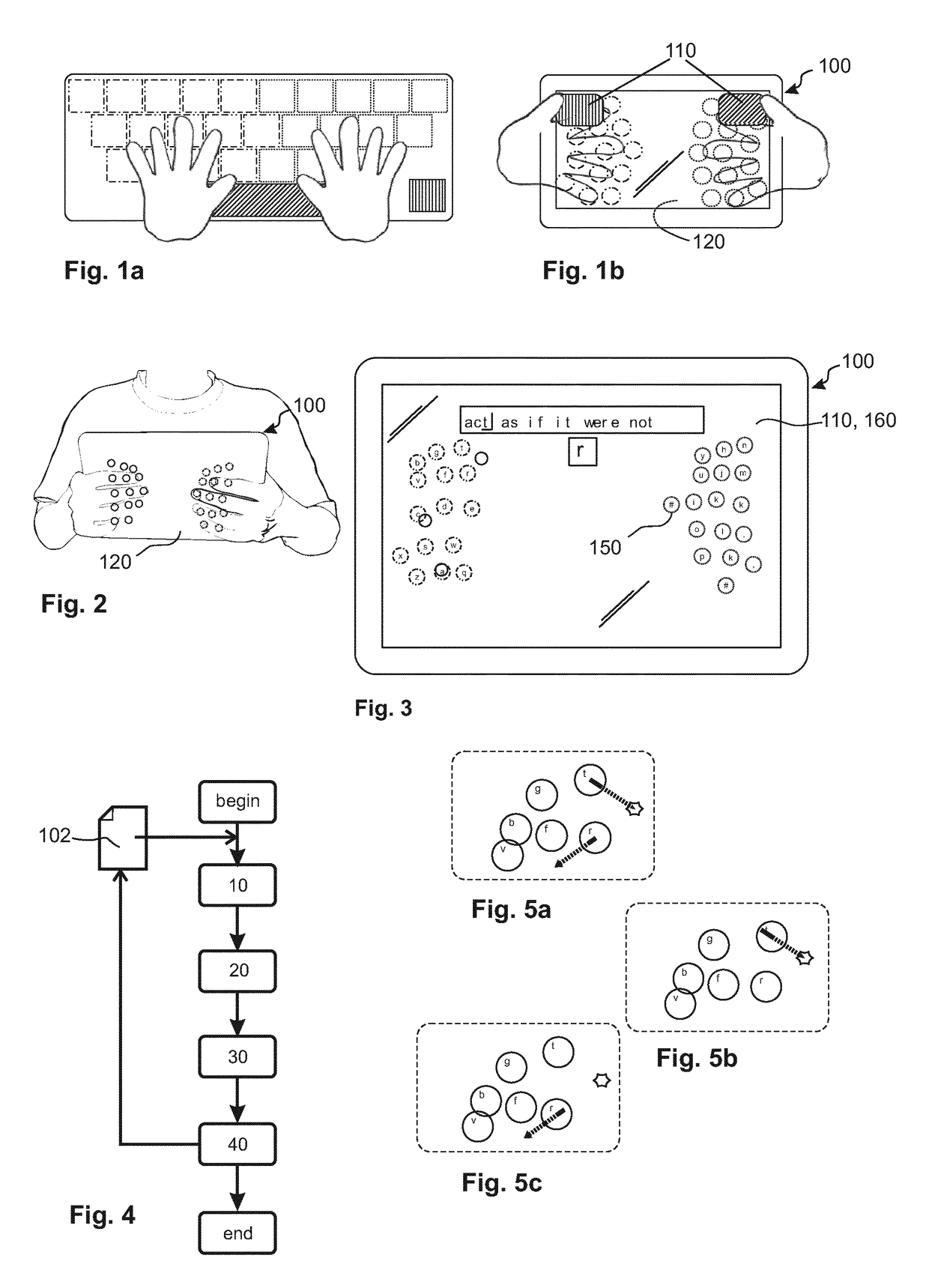Method and device for typing on mobile computing devices
a mobile computing and typing technology, applied in the direction of instruments, electric digital data processing, input/output processes of data processing, etc., can solve the problems of low text entry rate, high error rate, and slow entry rate of such software keyboards, so as to improve the productivity of users, reduce the cost of operation, and improve the effect of user experien
- Summary
- Abstract
- Description
- Claims
- Application Information
AI Technical Summary
Benefits of technology
Problems solved by technology
Method used
Image
Examples
Embodiment Construction
[0080]This section describes the invention in further detail based on preferred embodiments and on the figures. Unless stated otherwise, similar reference numbers will be used to denote similar concepts across different embodiments of the invention. For example, reference numerals 100, 200 and 300 will be used to denote a device according to the present invention in three different embodiments.
[0081]The embodiments presented herein should allow the skilled person to understand and implement the method and device according to the present invention. Features described for a specific embodiment are applicable to all embodiments according to the present invention, unless stated otherwise.
[0082]FIG. 1a shows a state of the art on-screen keyboard of a computing device, such as a tablet computer. The arrangement of the virtual keys that are displayed mirrors the known arrangement on hardware keyboards. In order to efficiently and quickly type on such a keyboard with both hands, the tablet ...
PUM
 Login to View More
Login to View More Abstract
Description
Claims
Application Information
 Login to View More
Login to View More - R&D
- Intellectual Property
- Life Sciences
- Materials
- Tech Scout
- Unparalleled Data Quality
- Higher Quality Content
- 60% Fewer Hallucinations
Browse by: Latest US Patents, China's latest patents, Technical Efficacy Thesaurus, Application Domain, Technology Topic, Popular Technical Reports.
© 2025 PatSnap. All rights reserved.Legal|Privacy policy|Modern Slavery Act Transparency Statement|Sitemap|About US| Contact US: help@patsnap.com



